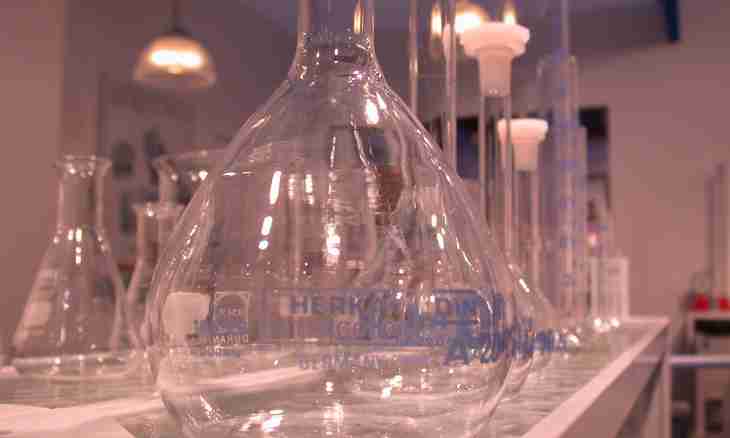Concentration of acid – the size showing what share of this substance is in a certain amount or volume of its solution. She can say differently: in the form of a mass fraction, molarity, a molyalnost, etc. In laboratory practice often there is a need to define concentration of acid.
It is required to you
- - the graduated measured glass;
- - laboratory scales;
- - glass pipette;
- - litmus;
- - alkali solution.
Instruction
1. Let's assume, you have a capacity with H2SO4 label. That is at once it becomes clear: it contains sulfuric acid. But there is no information any more. How to define its concentration? You can make it by means of tables of density of solutions. There is a set of reference books where values of density of solution of chemicals depending on their concentration are given.
2. Take the graduated measured glass, weigh it on laboratory scales. Designate the mass of an empty glass as m1. By means of the glass pipette flow in it some volume the V chamois of acid. Again weigh a glass, designate its weight as m2. Density of acid is on a formula: (m2 – m1) / V.
3. According to the table of density establish concentration of solution. Let's assume, during the described experience you calculated density of sulfuric acid: 1.303 grams / milliliter. To it there corresponds 40% concentration.
4. How concentration of acid still is defined? There is sensitive and very exact method which is called direct titration. It is based on acid neutralization reaction by solution of alkali which concentration is known. For example, in a case with sulfuric acid: H2SO4 + 2NaOH = Na2SO4 + 2H2O.
5. According to the scheme of reaction it is visible that for neutralization of one of acid it is required two asking sodium hydroxide. Proceeding from it, knowing the volume of the studied acid solution, the volume of the alkali which went for its neutralization and also concentration of alkali it is possible to calculate and concentration of acid.
6. But how to determine the exact volume of the alkali necessary for acid neutralization? By means of the indicator changing color. For example, litmus. Experiment is made so. Over a vessel with the known volume of acid (where also add several drops of the indicator) fix the graduated burette with alkali solution.
7. Write down the indication of the top level of alkali, then, having carefully unscrewed the burette crane, begin to flow on drops it to acid. Your task is to block the crane when red color of the indicator disappears. Write down the indication of the lower level of alkali and calculate what its volume left on acid neutralization.
8. And further, knowing the size of this volume and exact concentration of alkali, it is easily possible to calculate how many moths of alkali reacted. Respectively, the number of moles of acid was twice less. Knowing the initial volume of acid, you will find its molar concentration.

